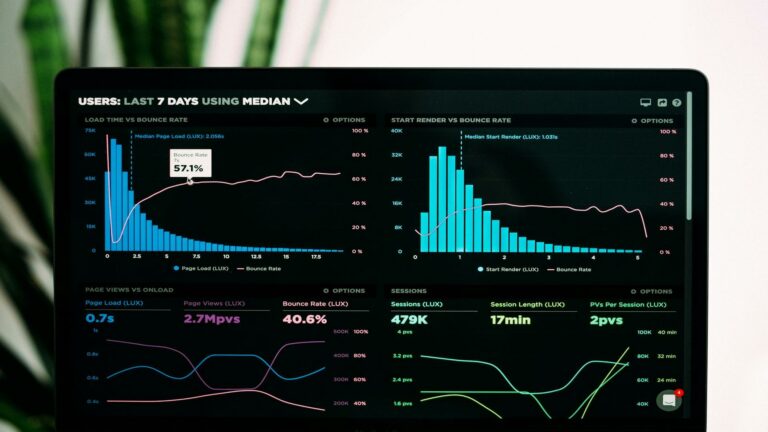Optimize Website for Conversions: The Ultimate Guide
In today’s competitive digital landscape, having a visually appealing website is no longer enough. To truly succeed online, you need to optimize your website for conversions. At Web Design London, we specialize in creating high-performing websites that not only look great but also drive results. In this comprehensive guide, we’ll explore proven strategies to optimize your website for conversions and take your online presence to the next level.
Understanding Website Conversion Optimization
Optimizing Your Website for Conversions: A Comprehensive Approach
Before we dive into the strategies, let’s clarify what it means to optimize website for conversions. Conversion rate optimization (CRO) is the systematic process of increasing the percentage of website visitors who take a desired action, such as making a purchase, filling out a form, or subscribing to a newsletter. By focusing on conversion optimization, you can maximize the value of your existing traffic and significantly improve your return on investment (ROI) in digital marketing.
To effectively optimize your website for conversions, consider the following key aspects:
- User Experience (UX): Ensure your website is intuitive, easy to navigate, and provides a seamless experience across all devices. A well-designed UX can dramatically impact your conversion rates.
- Clear Call-to-Actions (CTAs): Use compelling, action-oriented CTAs that stand out and clearly communicate the value proposition to your visitors.
- Content Relevance: Align your website content with user intent and expectations. Tailoring your messaging to your audience can significantly boost conversions.
- Page Load Speed: Optimize your website’s performance to reduce bounce rates and improve user engagement. Faster loading times correlate with higher conversion rates.
- Trust Signals: Incorporate elements like customer testimonials, security badges, and social proof to build credibility and encourage conversions.
Remember, conversion optimization is an ongoing process that requires continuous testing, analysis, and refinement. By implementing these strategies and consistently tracking your website’s performance, you can create a data-driven approach to improving your conversion rates and overall business success.
10 Powerful Strategies to Optimize Website for Conversions
Top Strategies to Optimize Website for Conversions
At Web Design London, we implement a range of proven strategies to help our clients optimize website for conversions. Here are some key approaches we use:
- Clear and Compelling CTAs: We strategically place visually striking calls-to-action throughout the site to guide visitors towards desired actions.
- Intuitive Navigation: Our designs ensure users can easily find what they’re looking for, reducing bounce rates and improving engagement.
- Mobile Responsiveness: With increasing mobile traffic, we ensure flawless performance across all devices to maximize conversion potential.
- Fast Loading Speeds: We optimize site performance to reduce bounce rates and enhance user experience, as even a one-second delay can significantly impact conversions.
- Trust Signals: We incorporate elements like customer testimonials, security badges, and high domain authority to build credibility and reassure potential customers.
- Personalization: Leveraging AI-powered personalization to tailor user experiences based on individual preferences and behaviors, significantly increasing the likelihood of conversions.
- A/B Testing: We conduct thorough A/B tests to compare variants and identify which elements drive more conversions, making data-driven recommendations for improvements.
By implementing these strategies, we help transform websites into high-performance marketing machines that generate leads and sales on autopilot. Our approach combines industry expertise with data-driven techniques to deliver measurable results for our clients.
The Role of Web Design London in Optimizing Your Website for Conversions
At Web Design London, we specialize in creating websites that not only look stunning but also deliver results. Our team of experts combines cutting-edge design principles with data-driven optimization strategies to help businesses achieve their online goals. Here’s how we can help you optimize your website for conversions:
Align Your Content with User Expectations
To drive conversions, your webpages need to align with what your audience expects. For instance, if users click on an ad promising a 50% discount on a specific product, the landing page should clearly display that product and the discount. Any deviation can confuse visitors and cause them to leave. This is why understanding search intent is crucial, as it represents what the user wants to achieve when they search for something online[1).
Diversify Your Calls to Action (CTAs)
Using CTAs in multiple forms and locations across your pages can increase the chances of a visitor converting. For example, instead of relying on a single CTA at the end of a blog post, use a combination of CTA buttons, in-text CTAs, and banners. This approach ensures that users have multiple opportunities to convert, even if they don’t read the entire page. A study by HubSpot found that text-based CTAs can be particularly effective, with up to 93% of a post’s leads coming from these CTAs alone[2).
Remove Distractions
To optimize conversions, it’s essential to minimize distractions on your pages. For example, on a landing page designed to drive demos, removing the navigation bar can help keep the focus squarely on the desired action. This approach is exemplified by HubSpot’s landing page for a guide to building an effective LinkedIn profile, which lacks a navigation bar to avoid interrupting conversions[1).
Apply What You’ve Learned from High-Converting Content
Analyzing which pages have driven the most conversions can help you identify successful tactics. Use tools like Google Analytics 4 (GA4) to see which elements, such as compelling visuals, clear and concise copy, and prominent CTA placement, have been effective. Then, apply these elements to other pages to improve their conversion rates[1).
Optimize for User Experience (UX)
A well-designed user experience is critical for conversion rate optimization. This includes simplifying navigation, ensuring quick page load times, and optimizing for mobile devices. According to Optimizely, effective UX design involves creating intuitive and enjoyable user interactions, which can significantly boost conversions[3).
Use Trust Signals and Personalization
Incorporating trust signals such as customer testimonials, case studies, and industry badges can help build credibility and trust with your visitors. Additionally, personalizing content and product recommendations based on user behavior can enhance the user experience and increase conversions. Tools like VWO Personalize can help you deliver tailored experiences that resonate with your audience[4).
Continuously Test and Iterate
Conversion rate optimization is an ongoing process that involves continuous testing and iteration. By systematically comparing variations of page elements through A/B testing, you can identify top performers and make data-driven decisions. This iterative approach ensures that your website is always optimized for the best possible conversion rates. For a detailed guide on this process, refer to Contentsquare’s CRO guide[5]).
Case Studies: Success Stories in Website Conversion Optimization
Success Stories: Optimizing Websites for Conversions
At Web Design London, we’ve helped numerous businesses across various industries optimize their websites for conversions. Our approach combines data-driven strategies with creative solutions to deliver remarkable results. Here are a few success stories that showcase the power of effective conversion rate optimization (CRO):
- E-commerce Boost: We helped an online retailer increase their conversion rate by 35% by implementing personalized product recommendations and streamlining the checkout process.
- Lead Generation Triumph: A B2B software company saw a 50% increase in qualified leads after we optimized their landing pages and implemented strategic A/B testing.
- Non-Profit Engagement: We helped a charity organization double their online donations by improving their website’s user experience and crafting compelling calls-to-action.
These success stories demonstrate that every website has the potential for improvement. By focusing on user behavior, data analysis, and continuous optimization, we’ve helped our clients achieve significant gains in their conversion rates and overall business performance.
Ready to optimize your website for conversions? Contact Web Design London today to discuss how we can help you achieve similar success.
Conclusion: Transform Your Online Presence with Web Design London
Optimizing your website for conversions is a crucial step in achieving online success. By implementing the strategies outlined in this guide and partnering with experts like Web Design London, you can significantly improve your website’s performance and drive tangible business results.
At Web Design London, we’re passionate about helping businesses thrive in the digital world. Our team of experienced designers, developers, and conversion optimization specialists is ready to help you take your online presence to the next level.
Ready to optimize your website for conversions and unlock your business’s full potential? Contact Web Design London today for a free consultation and discover how we can transform your online presence.













